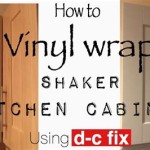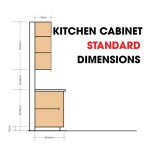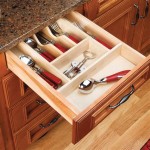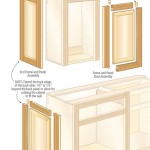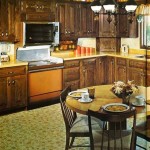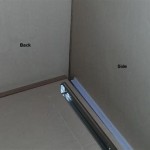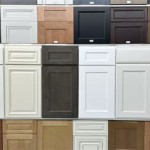Kitchen Cabinet Shelving Inserts: Optimizing Space and Functionality
Kitchen cabinet shelving inserts are accessories designed to improve the organization, accessibility, and overall functionality of kitchen cabinets. They address common issues such as wasted vertical space, difficulty reaching items in deep cabinets, and general clutter. These inserts come in a wide variety of styles, materials, and configurations, catering to different types of cabinets and storage needs. The integration of shelving inserts is a cost-effective method to enhance kitchen efficiency without undertaking a full-scale remodeling project.
The effectiveness of kitchen cabinet shelving inserts lies in their ability to customize storage solutions. Standard kitchen cabinets often come with a limited number of fixed shelves, which may not be optimal for storing items of varying sizes. Shelving inserts provide options to subdivide cabinet space, create tiered storage, and bring items within easier reach. This leads to a more organized and user-friendly kitchen environment.
Understanding the Benefits of Shelving Inserts
Implementing kitchen cabinet shelving inserts offers numerous advantages. These benefits extend beyond simple organization, impacting the overall usability and enjoyment of the kitchen space.
One key benefit is maximizing storage capacity. By utilizing shelving inserts, homeowners can effectively double or even triple the storage potential of their existing cabinets. Inserts like tiered shelves and vertical dividers allow for the efficient stacking and arrangement of items, preventing wasted space above and around stored goods.
Improved accessibility is another significant advantage. Reaching items at the back of deep cabinets can be challenging. Shelving inserts, such as pull-out shelves and lazy Susans, bring items forward, eliminating the need to rummage through cabinets and reducing the risk of knocking things over. This is particularly helpful for storing frequently used items like pots, pans, and spices.
Enhanced organization is perhaps the most obvious benefit. Shelving inserts allow for the categorization and separation of different types of items. This can be achieved through the use of dividers for organizing baking sheets and cutting boards, or drawer organizers for cutlery and utensils. A well-organized kitchen reduces stress and saves time when preparing meals.
Furthermore, shelving inserts can protect cabinet interiors. Liners and shelf protectors prevent spills and scratches, extending the lifespan of the cabinets. This is especially important for cabinets made of delicate materials or those susceptible to moisture damage.
Types of Kitchen Cabinet Shelving Inserts
The market offers a diverse range of kitchen cabinet shelving inserts, each designed for specific purposes and cabinet configurations. Understanding the different types available allows homeowners to choose the inserts that best suit their individual needs.
Pull-Out Shelves: These are among the most popular types of shelving inserts. They feature a sliding mechanism that allows the entire shelf to be extended out of the cabinet, providing full access to the contents. Pull-out shelves are ideal for storing heavy or bulky items, such as pots, pans, and small appliances.
Lazy Susans: These rotating shelves are particularly useful for corner cabinets, which are often difficult to access. Lazy Susans allow homeowners to easily reach items stored in the back of the cabinet by simply rotating the shelf. They are commonly used for storing spices, condiments, and other small items.
Tiered Shelves: These inserts feature multiple levels, creating additional storage space within a single cabinet. Tiered shelves are often used to store canned goods, spices, and other items that can be stacked vertically.
Vertical Dividers: These dividers are designed to separate items stored vertically, such as baking sheets, cutting boards, and platters. They prevent these items from falling over and allow for easy retrieval.
Drawer Organizers: While technically for drawers, these inserts greatly contribute to overall cabinet organization. They come in various configurations to hold cutlery, utensils, spices, and other small items neatly and efficiently.
Spice Racks: These specialized inserts are designed specifically for storing spice jars. They can be mounted on cabinet doors or walls, or placed inside cabinets. Spice racks keep spices organized and readily accessible.
Under-Shelf Baskets: These baskets attach to the underside of existing shelves, creating additional storage space for items like dish towels, cleaning supplies, or small appliances.
Roll-Out Trays: Similar to pull-out shelves, these trays offer a shallower storage option, ideal for items like canned goods, jars, or even produce. The roll-out functionality allows for easy viewing and access.
Factors to Consider When Choosing Shelving Inserts
Selecting the appropriate kitchen cabinet shelving inserts requires careful consideration of several factors. These factors include cabinet dimensions, storage needs, materials, and budget. A thorough assessment ensures that the chosen inserts are functional, durable, and aesthetically pleasing.
Cabinet Dimensions: Accurately measuring the interior dimensions of the cabinets is crucial before purchasing any shelving inserts. This ensures that the inserts will fit properly and function as intended. Pay attention to the width, depth, and height of the cabinet opening, as well as any obstructions that may interfere with the installation or operation of the inserts.
Storage Needs: Identifying the specific storage needs is essential for selecting the most appropriate types of inserts. Consider the types of items that will be stored, their size and weight, and how frequently they will be accessed. For example, if storing heavy pots and pans, pull-out shelves with sturdy construction are recommended. For organizing spices, a tiered spice rack or door-mounted spice rack may be the best option.
Materials: Shelving inserts are available in a variety of materials, including wood, metal, plastic, and wire. Each material has its own advantages and disadvantages in terms of durability, appearance, and price. Wood inserts offer a classic look and can be stained or painted to match the cabinets. Metal inserts are durable and easy to clean. Plastic inserts are lightweight and affordable. Wire inserts offer good visibility and ventilation. The choice of material should be based on personal preferences and the overall aesthetic of the kitchen.
Budget: The cost of kitchen cabinet shelving inserts can vary widely, depending on the type, material, and brand. It is important to establish a budget before shopping for inserts. While it may be tempting to opt for the cheapest options, investing in higher-quality inserts can save money in the long run by providing greater durability and functionality.
Installation: Some shelving inserts are easy to install, requiring only basic tools and minimal effort. Others may require more complex installation procedures or professional assistance. Consider the level of DIY skill and comfort when choosing inserts. If unsure about installation, it is best to consult with a professional.
Accessibility: Evaluate the accessibility of the cabinets when selecting shelving inserts. For those with mobility issues, pull-out shelves and lazy Susans can greatly improve accessibility by bringing items within easy reach. Consider the height and depth of the cabinets, as well as any physical limitations, when making a decision.
Aesthetics: While functionality is the primary consideration, aesthetics also play a role in choosing shelving inserts. Select inserts that complement the existing style and color scheme of the kitchen. Wood inserts can be stained or painted to match the cabinets, while metal inserts offer a more modern look. Consider the overall appearance of the kitchen when making a decision.
Adjustability: Opting for shelving inserts with adjustable features can provide greater flexibility and adaptability to changing storage needs. Adjustable shelves can be moved up or down to accommodate items of different sizes. Adjustable dividers can be repositioned to create custom storage configurations.
By carefully considering these factors, homeowners can select the kitchen cabinet shelving inserts that will best optimize their space, improve functionality, and enhance the overall aesthetic of their kitchen.
Properly installed and maintained kitchen cabinet shelving inserts can significantly enhance the functionality and organization of any kitchen. Careful planning and selection are key to achieving optimal results.

Kitchen Cabinets Pull Out Storage Solutions Of The Desert

7 Interior Organizers That Will Improve The Utility Of Your Cabinets Residential S

Cabinet Insert Ideas Kitchen Inserts

16 Kitchen Storage Solutions For A Clutter Free Space Wolf Home S

Cabinet Inserts Make The Most Of Your Space Locale Designs Interior Design Camrose Alberta

60 Clever Cabinet Organization Tips To Double Your Storage 2024

16 Kitchen Storage Solutions For A Clutter Free Space Wolf Home S

Custom Cabinet Storage Solutions Kitchen Magic

31 Best Kitchen Cabinet Organizers 2024
:strip_icc()/121035540_331772381251072_3717720175166945340_n-ae336a3237ca44c6bdddd093c7d1eb97.jpg?strip=all)
21 Kitchen Cabinet Organization Ideas You Need To Try
Related Posts

